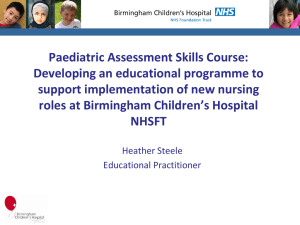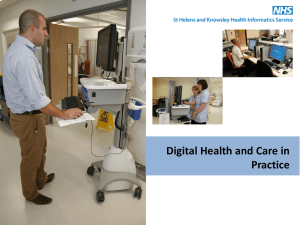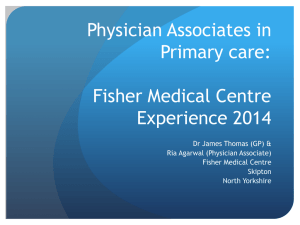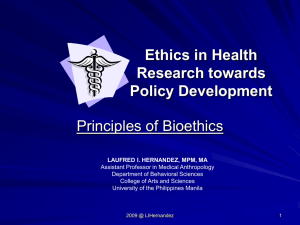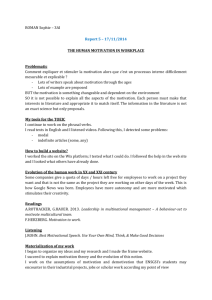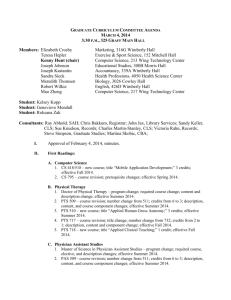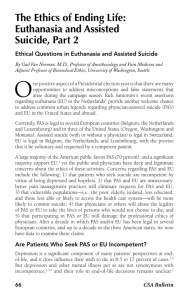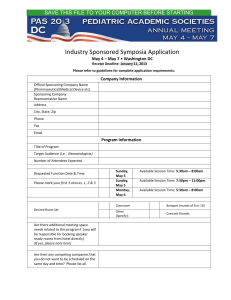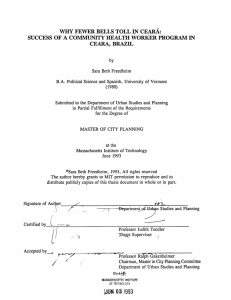Euthanasia CON notes
advertisement
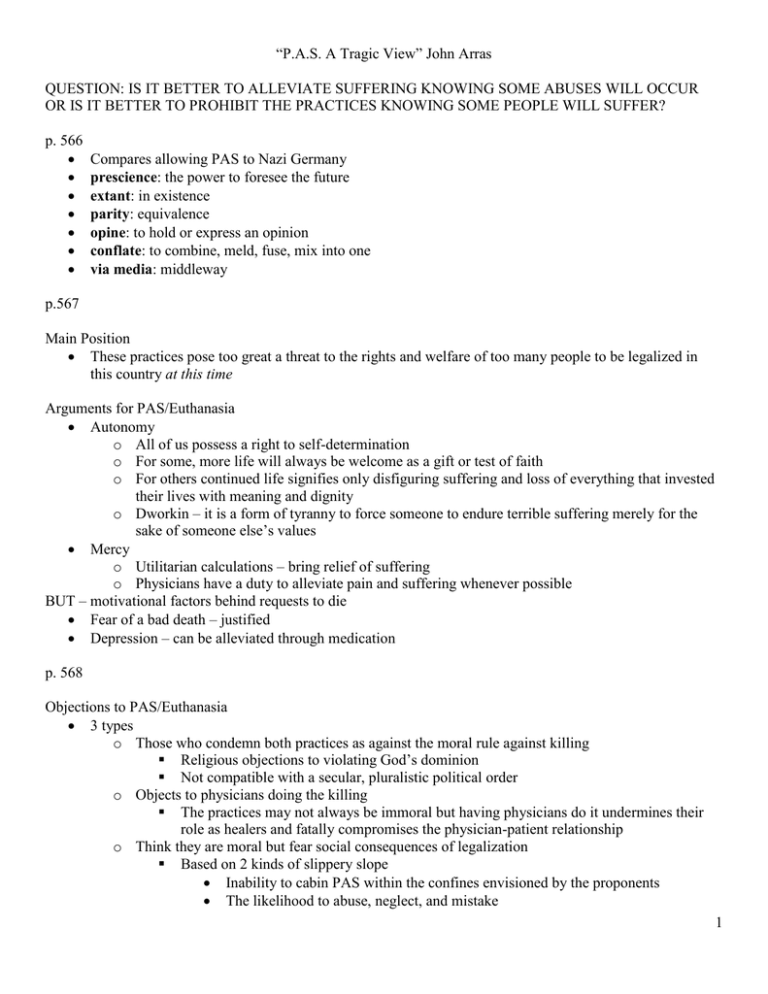
“P.A.S. A Tragic View” John Arras QUESTION: IS IT BETTER TO ALLEVIATE SUFFERING KNOWING SOME ABUSES WILL OCCUR OR IS IT BETTER TO PROHIBIT THE PRACTICES KNOWING SOME PEOPLE WILL SUFFER? p. 566 Compares allowing PAS to Nazi Germany prescience: the power to foresee the future extant: in existence parity: equivalence opine: to hold or express an opinion conflate: to combine, meld, fuse, mix into one via media: middleway p.567 Main Position These practices pose too great a threat to the rights and welfare of too many people to be legalized in this country at this time Arguments for PAS/Euthanasia Autonomy o All of us possess a right to self-determination o For some, more life will always be welcome as a gift or test of faith o For others continued life signifies only disfiguring suffering and loss of everything that invested their lives with meaning and dignity o Dworkin – it is a form of tyranny to force someone to endure terrible suffering merely for the sake of someone else’s values Mercy o Utilitarian calculations – bring relief of suffering o Physicians have a duty to alleviate pain and suffering whenever possible BUT – motivational factors behind requests to die Fear of a bad death – justified Depression – can be alleviated through medication p. 568 Objections to PAS/Euthanasia 3 types o Those who condemn both practices as against the moral rule against killing Religious objections to violating God’s dominion Not compatible with a secular, pluralistic political order o Objects to physicians doing the killing The practices may not always be immoral but having physicians do it undermines their role as healers and fatally compromises the physician-patient relationship o Think they are moral but fear social consequences of legalization Based on 2 kinds of slippery slope Inability to cabin PAS within the confines envisioned by the proponents The likelihood to abuse, neglect, and mistake 1 p. 569 An Option Without Limits Proponents begin with a modest agenda If autonomy is crucial, then the requirement of unbearable suffering would appear to be entirely subjective WHO IS TO SAY – other than the patient herself The requirement of terminal illness is an arbitrary standard against which to judge patients’ own subjective evaluation of their quality of life. If my life is no longer worth living, why should a terminally ill cancer patient be granted PAS but not me? If pain and suffering are deemed crucial, it is hard to see how the proposed barrier of contemporaneous consent of competent patients could withstand serious erosion. Actual Slippery Slope o Permit pas for incompetent patients who left advance directives o Then allowed by a substituted judgment for patients who would have wanted pas o Finally an objective test would be developed for patients including newborns whose best interests would be served by PAS or active euthanasia even in the absence of any subjective intent ***none of these slippery slope considerations amount to knock-down objections to further liberalization of our laws and practices The Likelihood of Abuse Empirical slope argument o Whatever criteria for justifiable pas and euthanasia are chosen, abuse if the system is highly likely to follow. Requirements for the practices could guard against abuse o All requests must be voluntary o No alternatives o Oversight p.570 All three requirements are problematic o Voluntariness Many requests would not be sufficiently voluntary Subtle coercive influences of physicians and family members (and economics) Physicians may not diagnose reliably and treat reversible clinical depression, particularly in the elderly population Our system discriminates against the poor and members of minority groups They have little to no access to basic care Physician incentives for delivering less care Expert palliative care is an expensive and time-consuming proposition Alternatives o Given the abysmal track record of physicians responding adequately to pain and suffering – we can predict that in many cases not all reasonable alternatives will have been exhausted. o Reason – inaccessibility of decent primary care to many Americans 2 Also – lack of training in palliative care among primary care physicians and cancer specialists Discrimination in the delivery of pain control on the basis of race and economic status Myths about the supposed ill effects of pain medications Restrictions against opioids Oversight o Pessimists doubt that any reporting system would adequately monitor these practices o Depends on whether patients and practitioners will regard these practices as essentially private matters o Dutch experience – doctors reticent to report cases to avoid public attention o Lack of oversight will likely result in society’s inability to respond appropriately to disturbing incidents and long-term trends. Summary Inadequacies in physician’s training, combined with structural flaws in our healthcare system, can be reliably predicted to secure the premature deaths of many people who would in theory be excluded by the criteria of proposals p. 571 Two Approaches to Social Policy Individual acts vs. social policy o Addresses the problem of generalizing from individual cases p. 572 (1) A judge-made policy based on constitutional law Dismisses forward-looking risks and potential problems Naïve trust in doctors If PAS is the same as withholding treatment o We would have to allow advocates/surrogates to make decisions for patients based on what they would have wanted o In cases involving withholding treatment there are no requirements such as Waiting periods, committee review, second opinions, and reporting p.573 Killing = letting die o The intention is the same o The cause of death is the same – interference of a 3rd party o Social risks and risks of abuse are the same (misdiagnosis, undue pressure) HIS OBJECTION TO CONFLATING KILLING WITH LETTING DIE o Overlooking the relevant differences between them leads proponents of legalization to ignore the very real social risks inherent in the judicial approach to policy o Alternatives: terminal sedation, hospice, refusal of life-sustaining treatment p.574 o “one-off” situations The difference between a policy of killing and a policy of letting die o However, if society as a general policy refused to honor requests to forgo treatments in order to avoid abuses, then everyone would have to submit to the imposition of unwanted and often invasive measures. Whereas the refusal to honor a request for PAS amounts to a refusal of a 3 positive benefit or assistance, the imposition of medical treatment against one’s will represents a violation of personal autonomy and physical integrity totally incompatible with the deepest meaning of our traditional respect for liberty. o The refusal to offer a deadly drug represents a failure of mercy requiring moral justification, the forced imposition of medical treatment arguably constitutes a trespass, or legal battery that is not justified. PAS would implicate many more people than withholding treatment There is more of a chance to kill perfectly healthy patients, or patients who have not yet reached the point of impending death p. 575 Courts – regulation rather than prohibition is the only constitutionally permissible means of avoiding possible adverse social consequences This would be the duty of each state States should calculate the balance of individual benefit and social risks Legislative approach is better than a judicial mandate o More democratic o Judicial approach vindicates autonomy as the expense of protecting the vulnerable Toward a Policy of Prudent Restraint and Aggressive Intervention A tragic choice Appeal to emotion p. 576 A tragic approach takes the form of the following argument: o (1) the number of genuine cases justifying PAS will be relatively small Patients who receive good personal care, good pain relief, good treatment for depression and supports tend not to persist in their desire to die o (2) the social risks of legalization are serious and predictable Expansion to nonvoluntary cases Failure to pursue alternatives Lack of access to good primary medical care o (3) rather than propose a dangerous policy for a relatively small number of genuine cases, we should instead attempt to redirect the debate toward the need to reform the way we die in America. Reform access to primary care and the education of physicians in palliative care o (4)there are those few patients who are beyond help, so opponents of legalization must offer creative and humane solutions Rendered permanently unconscious until death Sedation and starvation One-off situations 4
